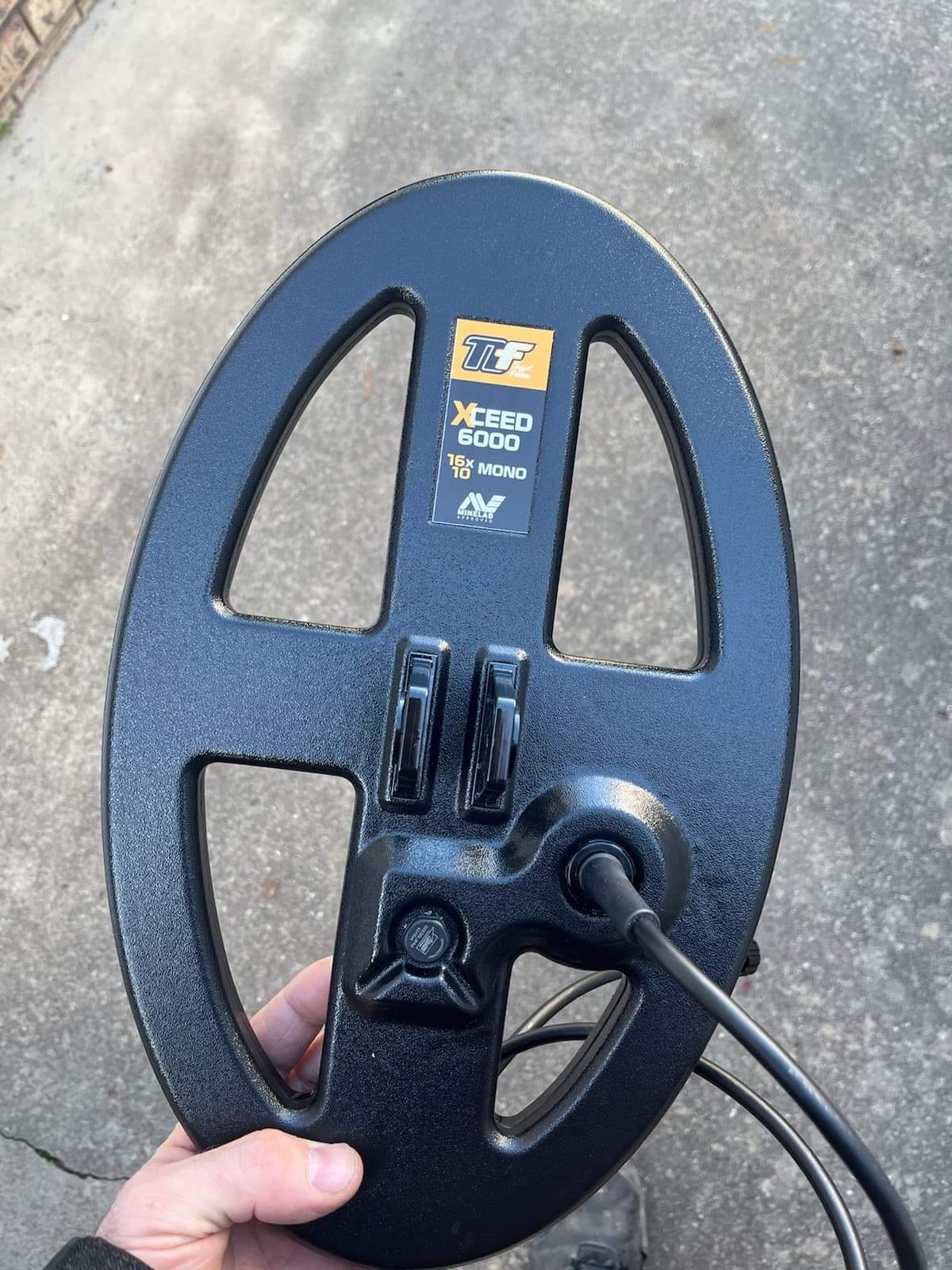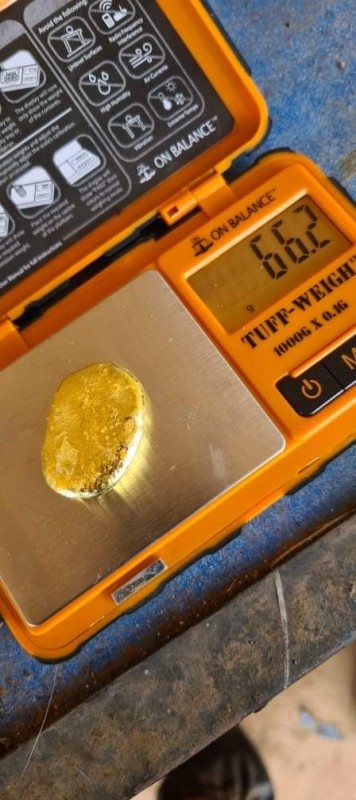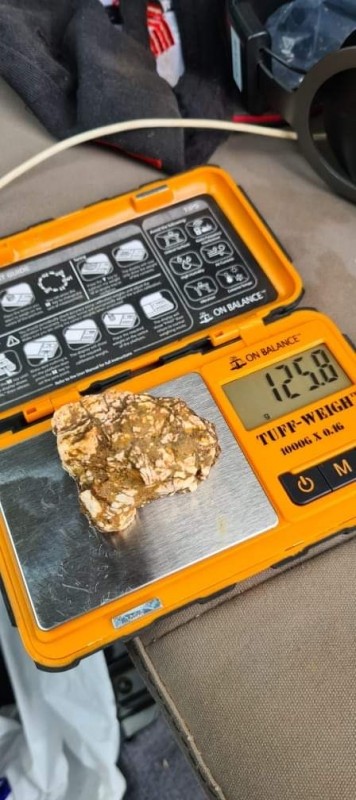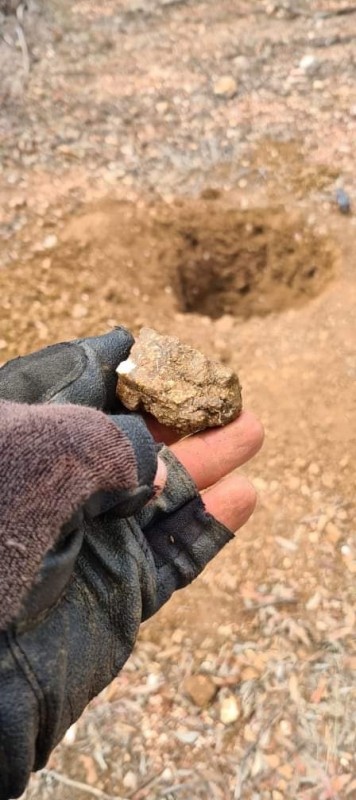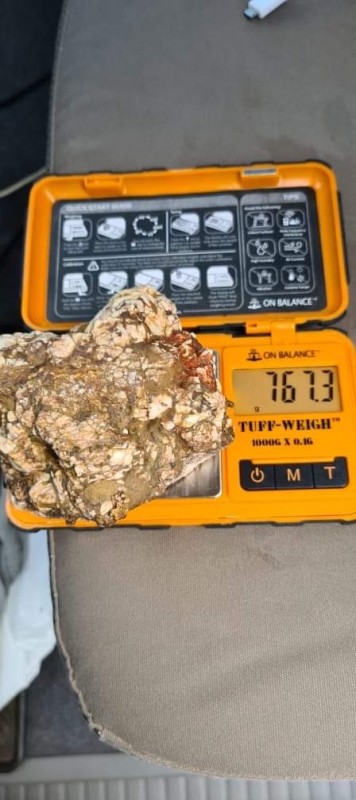-
Posts
1,084 -
Joined
-
Last visited
-
Days Won
35
Content Type
Forums
Detector Prospector Home
Detector Database
Downloads
Everything posted by Jonathan Porter
-
I have one phrase in answer to all this, “Range of Motion”. Every target has its optimal coil movement which is coil height, coil windings orientation and coil speed relative to Ground Zero. You can call the speed “speed dependant” if you like as we are almost always talking about ‘Motion’ detectors. The range of Motion is dictated by the ‘lead in and tail out’, swing speed is dictated by ‘Range of Motion” distance, ground conditions and size of target relative to depth. Once you get the “Range of Motion” worked out (that’s the distance measured between the start of the ‘lead in’ through GZ and out to the very end of the ‘Tail out”) then its just a case of massaging the swing speed and coil orientation to get the target signal to manifest properly compared to localised ground signal responses. These things are all being performed by all detector operators even inexperienced ones, it’s part and parcel to the use of a modern gold hunting motion metal detector. I find it’s best to be aware of them but not try to force things because gravity is your best friend when it comes to control, kinetic energy is an amazing control once something is in motion. In the case of the GPZ there’s a few factors to take into consideration when performing these tasks, first there is the visualisation and locking into memory information first experienced when the potential target was discovered, then there is the information pertaining to the Semi-Auto GB and how it interacts with said potential target, then there is the comparative information based on a locked or Manual GB pertaining to the target. All the while attention is being paid to swing speed, coil orientation, direction of sweep ect. The whole time this is going on I am doing my best to pendulum the coil in a smooth and controlled fashion over GZ, I let our beautiful world do the controlling part because she’s so much better at it than me. 😊 2 1/2 foot 2 ounce speci I massaged in with the help of planet earth and a good “Range of Motion”
-
I agree with just about everything you are saying as well as others in this thread so my comments are just my thoughts on the matter and not written in stone or anything like that. 🥴 The rest that follows is not directing entirely at the quotation but your comments created a desire to put forward my POV.😁 Sensitivity is very important to wring out an edge of detection target signal for sure but it can also kill faint signals if the control is overused. A good detectorist’s brain can get very good at picking out a signal from a busy background, the most powerful add-on to any detector is YOU after all.🤫😜 In essence I agree with the sensitivity first philosophy because it is a fundamental control, however I do not agree with Audio Smoothing use other than Off, IMHO that control should be limited to ZERO in ALL cases and all other adjustments made from there. Waving over a known target signal is not a good approach to come to a conclusion about a target signal standing out or not, the reason being is the target signal is obviously breaking through the dead zone so of course it’s going to stand out if you damp down or filter out the background noise. But what about the signals that are right on the edge of detection, what happens to them when you introduce ‘dead Zone’ filtering? I use the term dead zone because I’ve been corrected about my description of raising and lowering the noise floor filter through the use of Audio Smoothing. In essence it is the point where a target signal in relation to the threshold is allowed into the audio signal relative to the filtering, kind of like sensitivity of the threshold. Moving the dead zone relative to threshold dictates what can break through and what can’t. On the GPZ there is also a lot of other things going on at the same time when you introduce Audio Smoothing and is why I always use that control on OFF and will be recommending ML on any future models to not include it at all and instead mirror the way the whole concept has been approached on the GPX 6000. The GPZ 7000 does not need Audio Smoothing, the electronics are so refined with regards to Sferic noise there is no need for it. It’s inclusion on the GPX series was as a measure of controlling Sferics noise which they are really bad for, and ML in their infinite wisdom allowed 50 billion control combinations to the detriment of the end user causing absolute confusion, everyone’s got a favourite set of settings to the point where Opinions are like backsides, everyone’s got one! To my mind it says the engineers do not have confidence in their ability to set some controls in stone instead relying on the operator to try and find the right combination. The Audio Smoothing is a carry over from a bygone era and operators just want to hang onto controls out of fear of change rather than sound reasoning associated with having a full understanding of the trade off. Please do not take my wording personally, I’m passionate about the subject from my POV not about experienced operators opinions and what works best for them, I say this because this subject has come up before and my comments have left behind a lasting memory that I was unaware of. I am passionate about this but not insoluble. The GPZ is a very powerful tool and has the horsepower to be used in many different ways. So everything else that has been said in this thread is pretty bang on the money especially Jasong and Goldhound’s comments. As I have said before the Gain levels on the timings are quite a bit different between Normal and Difficult, so it takes some mental flexibility to go from one to the other as the whole detector sounds different when you dance between them, another reason why I do not like test beds. Assuming Audio Smoothing is turned off, you very quickly work out how much elevating sensitivity impacts on a target signal. Whenever you experiment on a ‘known’ target do not just wave over the target and make your call signal response, you need to walk away from ground zero and actually work the machine in the 50 square meter zone associated with the target and then come into the signal response and make your decision on any improvements. There is always a cut off on elevating sensitivity relative to ground signal, EMI and target signal and locations will be different. Only you can make the call on what ‘Actually’ works in your chosen location, so I recommend absolute honesty with yourself. So cranking up sensitivity to excessively high levels then clipping that sensitivity by introducing Smoothing will indeed make the signals that make it through the filter stand out big time but the edge of detection signals, the ones that only just move the threshold pitch will be blended out too, they have to because you’ve filtered them out. This then gets back to Range of Motion, a signal, depending on which direction you approach it, has a ‘lead in’ and a ‘tail out’. ‘Lead In’ is when your audio comes from a background ground signal behaviour that is averaged by the Semi-Auto GB just as the Threshold pitch starts to alter as the Rx of the coil starts to react to the field of a buried target, you then move the coil through the ‘Lead In’ section and pass over the loudest possible point of the target (dead centre or Ground Zero) this is where the target is at it loudest point assuming you have the coil over dead centre which is a whole different process of feeling around with the sweep direction and speed to find the true dead centre (Ground Zero). ‘Tail Out’ is as the target comes from peak volume back to background ground signal of the localised ground conditions. In all cases ‘Tail Out’ is twice as wide as the ‘Lead In’ this is because it takes time for electronics to recover. The ‘Lead In’ and ‘Tail Out’ is hugely affected by any sort of Motion filter and also swing speed. Elevating sensitivity to excessive levels can slurry up the ‘Lead In’ and ‘Tail Out’ information, adding Audio Smoothing makes them stepped where there is no partial information anymore but a significant step out of a filtered neutered background straight into a Pitch change, cranking sensitivity boosts the hell out of this giving a false sense of target definition, because the background noise is muted by the filter. It can seem like a cleaner signal but in reality you have distanced yourself from what is truly going on with the receiver by introducing filtering/dead zone. This is all my opinion and I do not for a second want to seem like its my way or the hi-way as I find discussions like this very interesting and am always experimenting and trying different things. I use strong words because I’m passionate about what I do and believe in it 100%, with the caveat of course being able to change my mind or have others change it for me.😜 JP
-
200 amps of lithium should be OK even for 2 compressor fridges, just have a decent charger and a genie as a back up if the weather goes south on you. WA in winter in the Eastern Gold Fields the day times temps don’t get much above 24 most days so the fridges are very effecient, night times go down to minus so they cycle less frequently. But there can be a lot of cloud cover at times so using the generator is a lot more effective to keep things topped up rather than having lots of solar panels scattered all around the camp running the risk of wind blowing them around and damaging them.
-
Having lots of battery storage is great but it’s no good to you if you can’t put power back into the system. This is not a reflection of any of the above mentioned systems just my personal observation based on many years of off the grid living when out bush prospecting. Lithium is amazing because the batteries are lighter and you can use 80% of the capacity, but when the system gets down you need to put the energy back in so plenty of solar is the answer. Whenever cloudy weather appears I always start using my generator for an hour at night and an hour in the morning to keep the batteries topped up rather than run the system down and then trying to recover. In winter you only really get 7 or so hours a day of decent sun to refresh the storage as well as run the fridges ect during the warmer part of the day, so if for instance the clouds roll in around lunch time then you don’t run the generator that night you’ve been running off battery storage for 22 hours till the sun becomes effective again around 10 am the next morning if the clouds come in again after lunch as they often do then your system will not have recovered enough. If the clouds remain you are then well behind the 8 ball and will have no choice but to try to catch up with either the DC to DC charger off the vehicle or using a generator, both of which take time when the storage gets down below 50%. 60 amps of charging ability is the minimum IMHO with lithium systems because they can be drawn down to the 80% of capacity level. If my systems have not recovered off solar by lunch time I start to think about using the generator. All my systems have been designed to have a balance between the amount of solar relative to the storage capacity and the draw required by fridges etc. It’s much better to have a smaller battery that can be charged up quicker if solar panel space is limited. Obviously if your system is rigged into your vehicle and you drive everywhere with a DC/DC charger this is less of an issue but with a camper trailer that’s in a fixed position this can become an issue even with solar panels strategically placed all around the camp (also a theft risk). Flat packing solar panels take up space and require set up when at your camp so keep this in mind when you design your system. JP
-
I’ve owned a lot of detectors over the years, Whites Vsat, Garret Infinium, Gold Bug II, Nokta etc etc and have used a lot of the others. But in Australia I can make a good living with ML machines and every machine that has come out has easily paid for itself as well as paid me to use it. The ML machines I did not like over the years was the GPX 4000 because it lacked SETA, its only saving grace was the Sensitive Smoothing timings in noisy ground, the GP extreme and GP 3000 because of their too fast ground tracking (in homogeneous soils they could track out a deep target before you even heard it) and the XT 18000 which did not do a very good job of the 60Khz and 20 was not much better, the XT 17000 was a far far better VLF and I used that professionally for a number of years. For me I feel I’ve been waiting my whole career for ZVT. In its current guise, even with the weight, I feel the GPZ could happily see me through to retirement. Now that there are more coil choices, and yes I include the X coils in this because if I was full time detecting I would definitely be using them as a tool to increase my chances because the risk is of little consequence when looking at the bigger picture from my personal perspective (this includes the price of the detectors as I have 2 or more GPZ’s for redundancy and backup anyway). The 6000 would definitely be part of my arsenal of equipment just based on the material that has been officially released, but then double down on that because of what I know.💲🥰😇 With a high gold price and plenty of opportunities to target areas I’ve collated over the years it will be a very good bread a new butter machine as I get older or for frequenting the more mountainous Terrain. For me Minelab and there continuation of investing money into R&D is a little like having a really good retirement fund, it gives me a feeling of security in the future because I know I will never be broke. I cast my mind back on what it was like 10 years ago and look at what I can easily do today, to get bored with the ease of pinging a piece of gold in flogged ground speaks volumes for how far technology has come. JP
-

How Many Detectors Have You Owned?
Jonathan Porter replied to Aureous's topic in Detector Prospector Forum
Ditto not enough for me too, not enough time to use them all!!🤪 -
I see this a lot with detector releases, a new machine is touted at being able to do a specific thing and all the comments by others are focused around how their current detector can do “such and such so why go with the new?”. Pie charts and depth % figures just do not cut it in the real world and are so dependant on the user and many other variables. This is why I hate seeing depth comparisons because all detectors are bound by the same laws. As an example I have dug many gold targets down to a depth of 3 feet, this is from the SD 2000 on through to the current day with the GPZ 7000, yet would any of you want to go back to a SD2000 to chase gold? I for one know I wouldn’t want to go down back down that path. 🥴🙏 With new tech it’s often not about the ability to find a certain sized target that sells it, it’s about the consistency and ease of use in finding those targets in well worked areas. Minelab have a very strong track record of regularly producing detectors that continue to pull gold from the ground that all of us have done too death over and over again. Pulling ‘point ones’ might seem boring to some but at AU$7.50 a piece they all add up, I for sure will pick up a $10 bill if I see it blowing down the street.💲😁 Pulling point ones over and over again can easily be done with the SDC, but the time you’ve invested in doing it is curtailed by the depth limitations of the tech, imagine better sensitivity whilst every swing of the coil could also bring you a bit better depth than the GPX5000? Suddenly your chances improve out of sight, the deep less frequent gold is in with a chance while you sniff out the little ones with ease.😎 Below is a pic of a large specimen I found just prior to Xmas, it was in a well worked thrashed area that I’ve been frequenting since the VLF days. It was only at a depth of 33 inches, I’ve dug targets in this area at those depths with a variety of detectors since 1995, yet the 7000 still produce this one in between old dig holes, some of which were very recent!! So if I say that I’ve found smaller gold weight specimens at similar depths with previous MPS machines does that discount the GPZ 7000’s abilities to punch deep too? At the end of the day there is a range of gold available to a certain depth that constrains us all, Minelab have been very good at producing more and more refined detectors that are good at sniffing out targets still within that range, the only limitation IMHO is our ability to imagine the potential, because none of us actually KNOW what’s still in the ground, thats the main driver for us to continue trying our luck isn’t it? SG test shows approx 12 ounces
-
I’m emotionally involved in this product and am very proud of it.😏 And even though I’m a veteran of many a product release I still find myself feeling the need to defend it, there’s always lots of self doubt during these early stages.🥺 So I’ll make an effort and try not to get too defensive as more information comes to hand and people react to new concepts and ideas.
-
Did not mean to offend but a lot of your comments are based on presumption. I can see your point and can only say that time will tell.
-
Rick, for a seasoned prospector your very negative.🥴 Don’t discount the 6000 till you’ve at least tried it. 🙏 Gold Monster AU$1k+, SDC AU$4k+, GPX 5000 AU$4K+, GPX 6000 AU$7k+, GPZ 7000 AU$9k+, there’s still a place in the line up for the SDC, simple switch on and go and easy to learn.
-
SDC is MPF, the timings on the SDC are what is known as ‘narrow band width’. The GPX6k is a ‘from the ground up’ totally new design PI. PI and ZVT are two different animals. For outright depth on bigger gold go ZVT every time. Currently for nasty salty ground go SDC MPF with its depth limitations. The moment you design wide band width timings on a very early sampling PI you come up against salt/conductive signals. ZVT is also prone to salt/conductive signals. You will note the inclusion of a DD coil with the 6K, not hard to come up with a correlation as to why that is a standard in the US and OZ boxes. Now I’m probably going to get growled at!!🥴
-
The componentry in the GPZ is all high end/high spec, very close tolerances are required for the tech to work so its not just some run of the mill cheap bits and pieces cobbled together in a sweat shop!! 🥴 As an example of cost, you will see the X coils and now the new Nugget Finder Z search coils are all quiet expensive, that should be an indication of the costs involved in manufacturing something for ZVT tech. GPZ’s are expensive to build, they were also very expensive to develop. JP
-
None of those things cost near on 10K and none of them are as sophisticated as the GPZ. 🥴 I too have dropped my GPZ from a foot on a regular basis, but it’s not deliberate and yes they do withstand accidental dropping, a part of my field testing was cringingly doing just that!!. The damage I saw earlier in this thread suggested a far greater impact that just a drop from 1 foot, I’ve never seen damage like that to the battery area and suggests the impact was high velocity for the weight of the battery to sheer off the pin like that!! Feet break all the time on my units, especially in the gully country, even with the covers installed and are basically sacrificial, hence the ease of buying replacement parts. JP
-
I see your point of course, I think the only way we can really map out the true state of affairs (the actual of ‘now’ compared to our idea of the ‘ideal’ ) is look back in time and compare to today. The Equinox is a good example of how far ML as a detector designer has come, go swing an Xterra or an Etrac and then go back to the NOX and you very quickly realise the improvements. The GPX6000 will be a very fine example of this new trend, but yes there will be niggles and annoyances but overall ML are definitely changing as a company when it comes to ergonomics. Hopefully the effort ML put into their technology continues unabated as well. One thing is for sure there will always be niggles and annoyances, but overall I see a definite trend towards the very positive. JP
-
Or they could just keep the detectors in the design phase forever constantly improving and ruggedising them until the end of time!!🥴 Edit: This is one of the reasons why I get a bit ‘pissed’ by all the aftermarket coil brand chatter, its always X sized nugget/nuggets were found with X sized/type coil and no mention of the actual detector it was attached to!!🥵 If X type coil was so revolutionary then why doesn’t the coil manufacture make their own electronics to go with said wonder coil? After all the detector manufacturers are doing a really crap job of things!!!
-
Firstly settings please, but I think I can guess at it a bit. When you change modes there is a massive change to the Tx and Rx of the machine, often if the sensitivity is cranked up to high levels the poor little chip overloads and throws the detector into the state described. To avoid lower your sensitivity or pick the coil up and away from the ground so the detector is not blasted with a massive change while loading up its new parameters. I’m not sure if the sluggish button presses are linked as I find the GPZ frustrating slow at the best of times (press, waiting waiting waiting.....change 😖), the sluggish button behaviour can also be corrected by firming up the Mylar power strip. The other thing that can send the GPZ into conniptions is having the WM12 turned on before the detector boots up, it tries to connect up the audio before all the parameters are fully loaded and can throw the detector into a looping power cycle. Best work flow is to turn on the detector and wait till the battery icon appears then turn on the WM12, follow this procedure and all is well. About one in 20 units do this with the stock that comes through our shop and is something I check during assembly and initial training. One customers machine does it religiously every time if he forgets whereas others only do it on occasion or not at all. There could be a correlation between the two scenarios and could be associated with a sensitive machine that is slightly vulnerable when it’s loading up its coefficients. During the load up period the detector is performing diagnostics and takes into account a lot of things like temperature and slight differences between components, this is why there are so few variations between GPZs. This type of process is vital due to the absolute need to get a near perfect voltage for the tech to work, Zero Voltage Transmission means ZERO variation in the voltage. Hope this helps JP
-
Headphones are such a personal a choice, so long as what’s supplied is reasonably functional then I feel its better if ML concentrate on making the detector as robust as possible and the tech as powerful as possible and keep the cost down by letting me decide what headphones I prefer. Every motorbike I ever bought had no helmet included, gosh that makes me cross I can’t legally ride my bike without one!!🥴😜 I like the new headphones that come with the SDC, the sound is very clear. I’m not a fan of the square boxy shape however as that magnifies wind noise going past the edges. Also anything touching or brushing the housing is really obvious!!
-
For that pin to break off suggests a huge impact. The clamps on the side of the detector should hold your battery reasonably in place with only one pin. Based on the damage I would say it is the internal Milar Flexi strip that delivers the audio to the headphone socket and power from the battery to the board that has come adrift internally which is causing the constant switch offs. It is a simple thing to fix but requires you to damage the tamper sticker. The Flexi strip is held in by a wide strip clamp mounted to the PCB, it has two lock tabs on either side, release those and pull the strip free and clean it with a tissue then insert back in firmly so that it is fully seated then lock back in place with the clamps. When this Felix gets loose the detector can exhibit all sorts of nasty behaviour and is a common problem for older units. The GPZ is driven by ZVT tech, ZVT (Zero Voltage Technology) requires a VERY stable power supply which is easily disrupted by a loose Flexi. Hope this helps JP
-
Passion is a beautiful thing, it gives you a reason to get out of bed in the morning and also helps a lot when life delivers you twists and turns. It can however be a problem when you’re around people who are challenged by your passion and either try to railroad it or compete in a negative way. This is the yuk of human nature and for me to mention it I also have to be honest and say I too suffer from the ‘human condition’. There are a few prime motivators, one is acceptance and the other is being mis-understood. The ugly comes out in both situations, one can be a defensive move because you’ve felt attacked which is reactionary, usually there is remorse when things cool down and hopefully you will be honest with yourself and others and make good, the other is probably the worst one because it can be more calculating. Seeking acceptance from others by attacking someone else to deliberately hurt that person especially in a social sphere is the worst kind of cruelty because a whole lot of like minded people can push the boundaries further and further till there is catastrophic damage. This is were forums can fall down and why Social Media is such a vipers den of iniquity! Sometimes I find myself getting a kick out of seeing someone get their comeuppance, but if you look at it that is exactly what is happening to me when I’m attacked, someone somewhere who does not like me is also getting a kick out of seeing me suffer too. So I try to keep that front and centre in my mind when words are being jousted about, often my emotions driven by passion get in the way. Choosing sides and ganging up either through words or actions is the human condition, when more aggressive personalities then bulge out of the main group pushing the boundaries to achieve group acceptance is when things can turn ugly. Hopefully cooler heads within the group will bring about balance and calm the groups down. I like Steve get a kick out of talking about my passion, I like Steve have been heavily involved in this industry both in development and also retail for a very long time. We sell/sold what we believe in and can become hugely offended when accused of duplicity. That’s the level of our passion, but looking back I also realise that over time things change and improve and I along with it have hopefully also changed and improved. The thing to keep in mind is we are human and make mistakes and also change our minds, but at the time of writing believe strongly in what we are saying. I miss out on a lot of business because I don’t chase every sale, I can’t because I do not want to totally commit to retail, unlike Steve I started in detector retail later in life so am less impassioned about the chase because I’m immersed elsewhere in my true passion which is metal detector development and prospecting. To me the shop is a distraction, if I focused on our shop and nothing else things would be a lot different but then I would not be able to spend time on what matters to me most. So call it Hype if you like but I’m still going to do what I do best and talk about the things I’m passionate about, if you don’t like it then please keep your opinions to yourself because I thrive on acceptance and hate being misunderstood. 😇 JP
-
And with people who don’t mind sharing their passion.😊
-

Simple Test 17 Inch X Coil Concentric With Vid
Jonathan Porter replied to araratgold's topic in Detector Prospector Forum
I’ve not had a chance to look at the whole vid, I’ll check it out later tonight. Yes it’s seem really nice and stable. 😃 -

Simple Test 17 Inch X Coil Concentric With Vid
Jonathan Porter replied to araratgold's topic in Detector Prospector Forum
Rick did you try coupling the coil flat to the ground and lifting away to see if it was saturating? The coil seemed to be very stable even in Normal. JP -
Whats that? A slip of Canvas and hip hole, been there done that ain’t in a rush to do it again anytime soon. 😂

